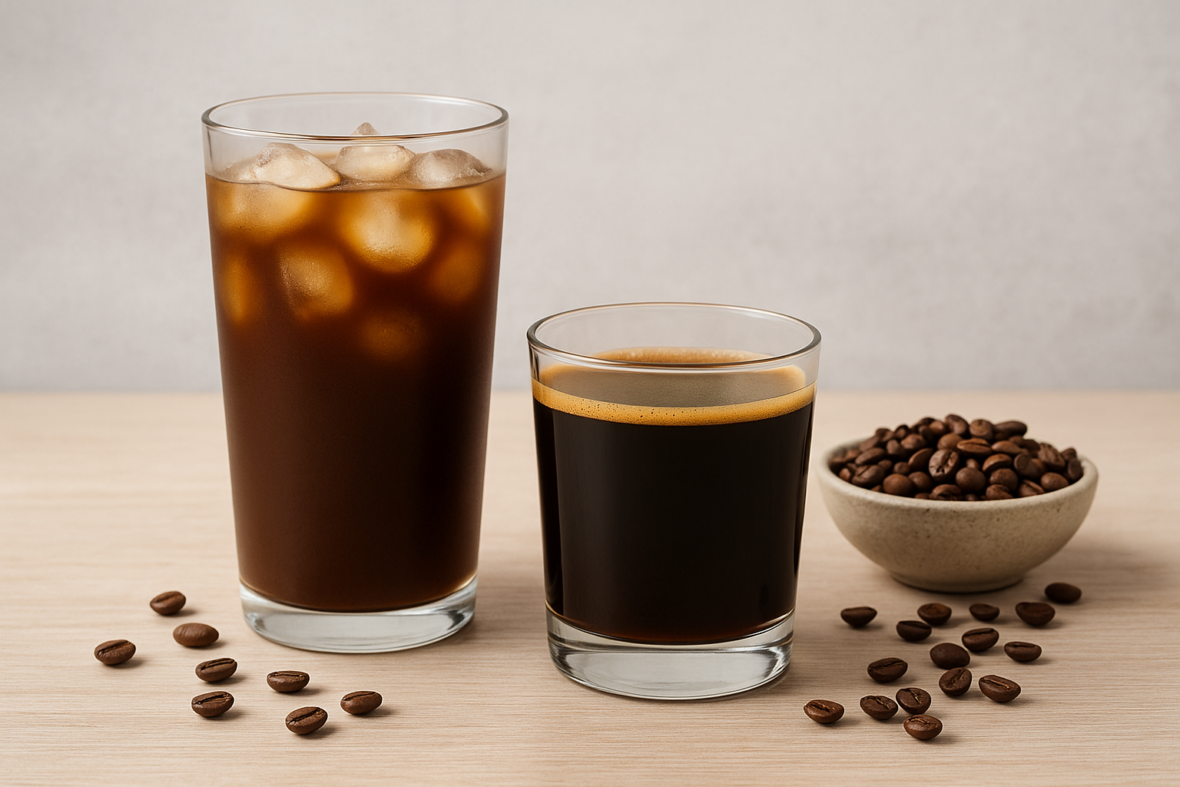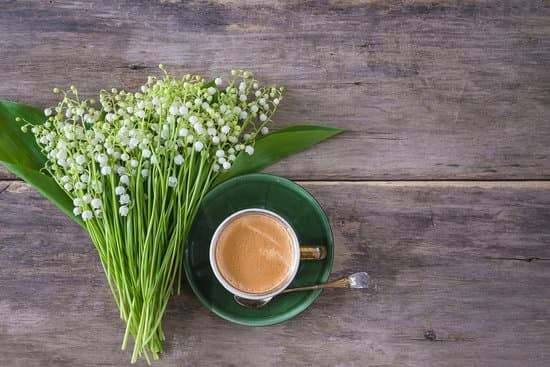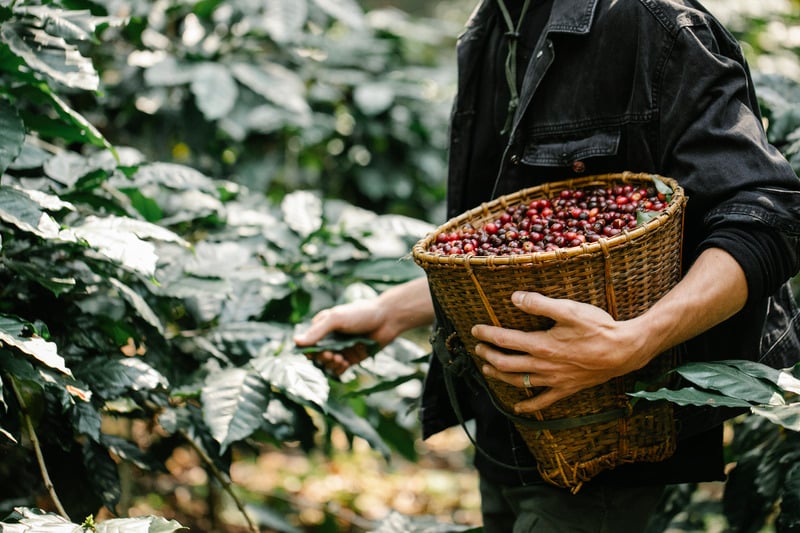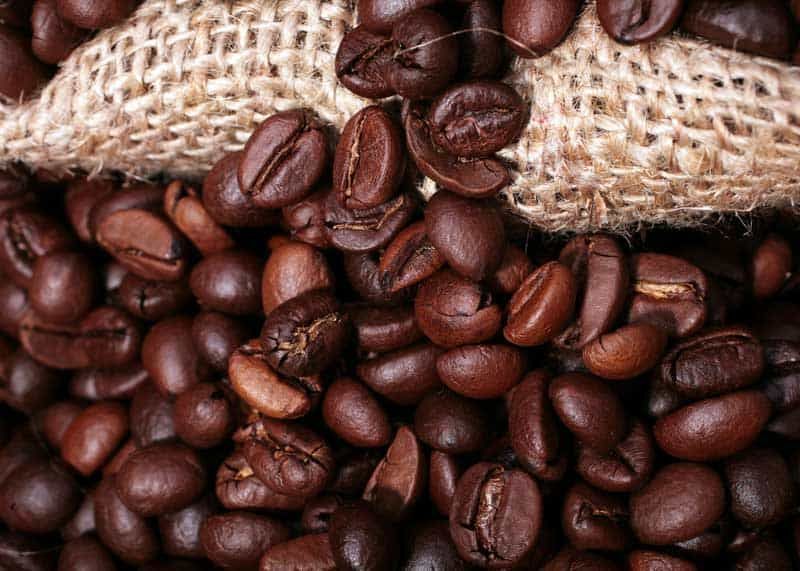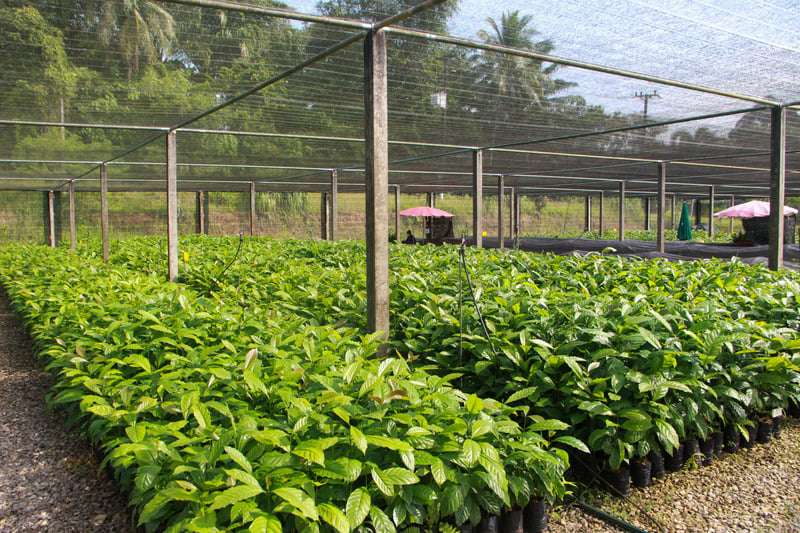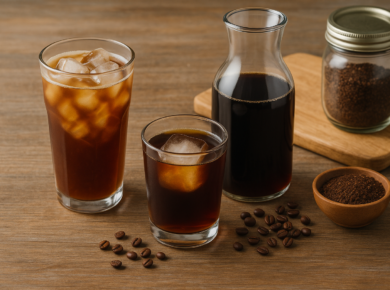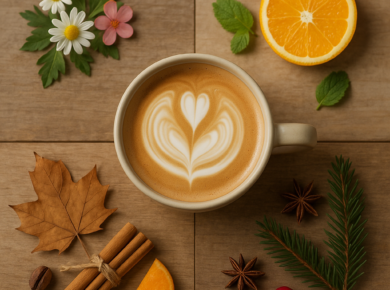Robusta coffee gets tagged as harsh, bitter, or only good for filler in low-cost blends. Most of that comes from how it is roasted and brewed, not from the bean alone. When you match robusta with the right method, you get a huge body, lingering crema, and a punchy cup that stands up to milk, sugar, and ice. This guide shows you which brew styles treat robusta well and how to dial them in.
Quick Brew Snapshot
| Method | Why It Suits Robusta | Starting Point |
|---|---|---|
| Espresso | Dense crema, concentrated body masks rough edges | 18 g in, 36 g out, ~25 sec |
| Moka Pot | Stovetop pressure-like extraction boosts bold notes | Fill basket level; medium-fine grind; stop early boil |
| French Press | Immersion softens bite; keeps oils for body | 1:15 ratio; 195–200°F; 4 min steep |
| Cold Brew | Cold extraction reduces bitterness; smooth iced cups | 1:4 concentrate; 12–16 hr steep; dilute to taste |
| Bonus: Phin (VN-style) | Slow drip + sweet milk balances bitterness | Medium-fine; condensed milk base |
Use the table as a fast reference; details below.
What Makes Robusta Coffee Different?
Robusta (Coffea canephora) differs from arabica in several ways that matter in the cup.
- More caffeine: Roughly double the caffeine by bean weight compared with arabica. That extra caffeine can taste bitter but also gives punch.
- Stronger flavor profile: Earthy, woody, nutty, sometimes grainy; less fruit and floral tone.
- More crema builders: Higher levels of certain compounds help build thick crema under pressure, which is why espresso roasters often include some robusta.
- Higher extraction risk: Brew it too hot or too fine and bitterness spikes fast.
So the trick is to channel the body and crema while trimming the harshness. Brew method choice is how you do that.
Why Brew Method Matters With Robusta
Brewing controls what dissolves out of the grounds. Temperature, contact time, and grind size either pull balance or draw bitterness.
- Hot + high contact = harsh: Thin grind and long contact at high heat strip out bitter compounds fast.
- Immersion vs percolation: Immersion (French press, cold brew) lets you choose the stopping point; percolation (drip, pour over) keeps flushing fresh water through, which can overdraw rough flavors from robusta.
- Pressure favors crema: Espresso-style pressure emulsifies oils and suspends fines, giving body that fits robusta.
Now let’s look at the brew styles that bring out the good side.
Best Brewing Methods for Robusta Coffee
Espresso: Crema & Concentration
If you drink milk drinks, this is where robusta shines. Even a 10–30% robusta component in a blend can thicken crema and give the shot muscle so it does not vanish in milk.
Why it works: Pressure extraction locks in body; the short contact time keeps bitterness from running wild if dialed correctly.
Starter recipe (double shot):
- Dose: 18 g coffee (pure robusta or blend)
- Yield: 36 g liquid
- Time: 24–28 sec from pump start
- Temp: 200°F is a good starting point; drop a degree or two if the shot tastes sharp
Tuning tips:
- Bitter and dry? Coarsen grind slightly or lower temp.
- Thin shot? Finer grind or longer ratio (18 in / 40 out) if you like more volume.
- Straight robusta too aggressive? Blend half arabica.
Moka Pot: Bold Flavor On The Stovetop
Moka pots concentrate flavor using steam-generated pressure that pushes water through the bed of coffee. Not true espresso pressure, but enough to squeeze out a thick, strong brew that suits robusta.
Why it works: Short brew window plus concentrated output produces a cup where robusta’s body and roast notes come through cleanly if you stop before the sputter phase.
Starter approach:
- Grind: Medium-fine (slightly coarser than espresso; finer than drip)
- Fill basket level, do not tamp
- Use pre-heated water in the base to reduce contact time on the stove
- Heat on medium; remove as soon as the top chamber is ~80% full and before gurgling
Drink it straight or cut 1:1 with hot water or steamed milk.
French Press: Full Body With Managed Bitterness
Immersion brewing gives you control over contact time so you can stop extraction before the harsh compounds swamp the cup.
Why it works: Coarse grind plus metal filter keeps oils and fine colloids in the brew, adding weight that balances robusta’s dryness.
Starter recipe:
- Ratio: 1:15 (30 g coffee to 450 g water)
- Water temp: 195–200°F (90–93°C)
- Steep: 4 min; stir gently at 2 min if grinds float
- Plunge and decant immediately to avoid continued steeping
Flavor notes: Expect a heavy-bodied cup with roasted nuts, cocoa, and a low-acid profile. If it tastes woody, try a shorter steep.
Cold Brew: Smooths The Rough Edges
Cold steeping dramatically reduces extraction of the bitter compounds that jump out in hot brews. Robusta, often knocked for harshness, mellows in a cold brew format while keeping caffeine and body.
Why it works: Low-temperature extraction limits sharp flavors; dilution lets you set strength.
Concentrate recipe:
- Ratio: 1:4 by weight (100 g coffee to 400 g water)
- Grind: Coarse
- Steep: 12–16 hr refrigerated or at cool room temp
- Strain through cloth or paper
- Serve: Start 1:1 concentrate to water or milk over ice
Flavor tweak: Add 10–20% medium roast arabica to brighten the cup without losing backbone.
Bonus: Vietnamese Phin (Drip Over Sweetened Milk)
Much commercial Vietnamese coffee uses robusta. The slow metal phin dripper produces a dense, strong brew that drips over sweetened condensed milk, which softens bitterness.
Starter recipe:
- 2 tablespoons medium-fine robusta in the phin
- Light tamp with gravity insert
- Add just-off-boil water to top
- Let drip 4–5 min over 2 tablespoons condensed milk
- Stir and add ice if you like it cold
Rich, sweet, and perfect if you’re easing into robusta.
Methods That Struggle With Robusta (And Why)
Not all brew styles flatter a bold bean.
Pour Over (V60, Kalita): The steady rinse highlights clarity and acidity, which robusta lacks, often leaving a hollow cup with accentuated bitterness.
AeroPress (standard hot method): High water temp plus pressure stirring can over-extract fast, though inverted short steeps can work if you keep ratios tight.
Turkish Coffee: Ultra-fine grind simmered in nearly boiling water pulls every bitter compound. Use only if you add sugar and spices or if you like very strong, bitter coffee.
Pro Tips For Brewing Better Robusta At Home
Dialing in a few variables makes a big difference.
Pick the roast carefully: Medium to medium-dark gives structure without too much carbon bite. Very dark roasts plus robusta can taste ashy.
Grind size is leverage: Too fine equals harsh; err on the coarser side for immersion methods.
Mind water temperature: Stay around 195–200°F for hot brewing. Boiling water spikes bitterness.
Filter your water: Hard or chlorine-heavy water dulls flavor and can magnify harsh notes.
Blend strategically: Even 20% arabica can round flavors while keeping robusta body and crema.
Additives that work: A pinch of salt or sugar can smooth rough edges. Milk proteins mute bitterness.
Give Robusta A Fair Brew
Robusta is not a lesser bean. It just misbehaves when brewed like delicate arabica. Use pressure (espresso, moka) or immersion (French press, cold brew) and you can pull a heavy, satisfying cup that stands up to milk, ice, or flavorings. Try a side-by-side test: brew the same robusta in a French press and a pour over. The difference explains everything.
FAQs
Is robusta good for espresso?
Yes. Even a small percentage in a blend builds crema and adds punch. Pure robusta espresso is strong; shorten the shot if it tastes rough.
Can I use robusta for cold brew?
Absolutely. Cold steeping smooths bitterness and keeps the caffeine hit. Use a coarse grind and a 12–16 hour steep.
How do I reduce bitterness in robusta?
Grind a bit coarser, lower brew temperature slightly, shorten contact time, or blend in some arabica. Milk or sugar also softens the edge.
What roast level works best?
Medium or medium-dark keeps body without pushing the smoky flavors that can pile up with robusta.
Does robusta always have more caffeine?
By bean weight, yes it typically carries roughly twice the caffeine of arabica, though your brewed cup depends on ratio and method.
